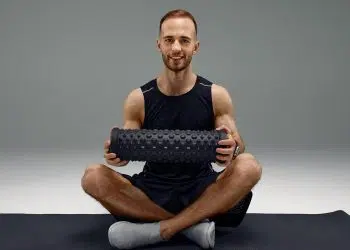Non-linear periodization is one of the most effective training methods for building muscle and strength. This comprehensive guide will teach you everything you need to know to implement non-linear periodization and get the best results.
What is Non-Linear Periodization?
Non-linear periodization involves changing your set and rep schemes frequently, often on a weekly or even daily basis. This is different from linear periodization where you progress from high reps to low reps over longer training cycles.
With non-linear periodization, you might do heavy sets of 5 reps on Monday, sets of 12 on Tuesday, and sets of 20 on Wednesday. Keeping your muscles guessing with varied rep ranges leads to continued progress.
Benefits of Non-Linear Periodization:
- Builds muscle size and strength simultaneously
- Prevents plateaus by constantly changing stimulus
- Keeps training fun and engaging with variety
Why Non-Linear Periodization Works
Research shows that non-linear periodization is superior for building muscle and strength compared to traditional programming:
- A 2009 study found that non-linear periodization led to increased strength gains on bench press and leg press compared to linear periodization programs.
- By constantly changing rep ranges, you’ll stimulate muscle growth through mechanical tension, muscle damage, and metabolic stress. This covers all the mechanisms for hypertrophy.
- Frequent changes prevent accommodation, leading to continued progress. Your muscles have to adapt to new challenges each session.
Overtraining vs. Overreaching
Many worry that more frequent training will lead to overtraining. But there’s a difference between overtraining and overreaching:
Level Up Your Fitness: Join our 💪 strong community in Fitness Volt Newsletter. Get daily inspiration, expert-backed workouts, nutrition tips, the latest in strength sports, and the support you need to reach your goals. Subscribe for free!
- Overtraining is a long-term imbalance between training load and recovery. It can take weeks or months to recover from.
- Overreaching is a short-term overload that leads to temporary fatigue and decreased performance. It only takes a few days or weeks to recover.
Overreaching is actually beneficial, while overtraining is harmful. Pushing yourself into short-term overreaching with non-linear periodization will force your body to adapt and get stronger.
Implementing Non-Linear Periodization
To start using non-linear periodization:
- Train each muscle group 2-3x per week. This provides more frequent protein synthesis spikes compared to once weekly sessions.
- Vary your sets and reps drastically each session. For example, sets of 5, 10, and 20 for the same exercise all in one week.
- Include a mix of heavy strength days and lighter hypertrophy focused days. This builds strength and size simultaneously.
- Use undulating periodization by changing rep ranges daily, weekly, or both. Keep your muscles guessing.
- Take planned deload weeks every 6-8 weeks when your body needs extra rest. Listen to your body closely.
Adapting to Higher Frequency Training
When you first increase your training frequency, you’ll likely experience some fatigue and muscle soreness. This is normal. Pushing through this initial discomfort will force your body to adapt to the new demands and you’ll make faster progress.
Expect an adaptation phase of 3-6 weeks where you feel run down. After adapting, your strength and energy will rebound and you’ll start seeing new gains.
Sample Non-Linear Split
Here’s an example non-linear split hitting each muscle 2x per week:
Monday: Legs (Strength)
- Squats – 4 sets x 5 reps
- Leg Press – 3 sets x 6 reps
- Leg Curls – 3 sets x 8 reps
Tuesday: Push (Hypertrophy)
- Bench Press – 3 sets x 10 reps
- Overhead Press – 3 sets x 12 reps
- Triceps Extensions – 3 sets x 15 reps
Wednesday: Pull (Hypertrophy)
- Deadlifts – 3 sets x 8 reps
- Lat Pulldowns – 3 sets x 12 reps
- Bicep Curls – 3 sets x 15 reps
Thursday: Legs (Hypertrophy)
- Leg Extensions – 3 sets x 15 reps
- Lunges – 3 sets x 10 reps
- Leg Press – 3 sets x 15 reps
Friday: Push (Strength)
- Bench Press – 4 sets x 5 reps
- Overhead Press – 3 sets x 6 reps
- Dips – 3 sets x 8 reps
Saturday: Pull (Strength)
- Deadlifts – 4 sets x 5 reps
- Bent Over Rows – 3 sets x 6 reps
- Weighted Pullups – 3 sets x 8 reps
This allows you to train for size and strength simultaneously by having a mix of heavy and light days. The frequent changes keep driving progress.
Deloading and Avoiding Overtraining
With more frequent training, deloading becomes even more important. Be sure to:
- Take a deload week every 6-8 weeks where you reduce volume and intensity. This allows your body to recover.
- Listen to your body closely. Increased fatigue, lack of motivation, and constant muscle soreness are signs you need a deload.
- Overreaching is good, overtraining is bad. Push yourself with the hard training but don’t overdo it.
- Adjust volume and intensity based on your recovery abilities. Start lower until you adapt.
Putting it All Together
The keys to effective non-linear periodization include:
- Training each muscle group 2-3 times per week
- Varying rep ranges drastically from day to day
- Having dedicated heavy and light days
- Using planned deload weeks to avoid overtraining
- Pushing through the initial adaptation phase
- Listening to your body and taking deloads when needed
Non-linear periodization is one of the best methods to build serious muscle and strength. By constantly changing your rep ranges and training muscles more frequently, you’ll force continual progress while avoiding plateaus. Use this guide to maximize your genetic potential. Let me know if you have any other questions!
Happy Lifting!











